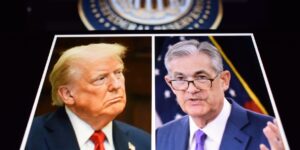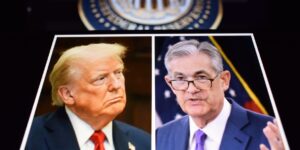
Amid growing calls for the Federal Reserve to begin lowering interest rates, White House officials (and the president himself) have adopted the tactic of pointing to the nominal policy rates of foreign central banks as evidence that the Fed is behind the curve.
At best, it’s a misleading argument; at worst, it’s intellectually lazy. Comparing nominal interest rates across countries without accounting for key differences ignores basic monetary economics. Such claims may be politically expedient, but they risk distorting public understanding of the Fed’s mandate and undermining its independence at a time of heightened macroeconomic complexity. They also invoke the memory of recent attempts to influence opinion by misciting, or oversimplifying, economic fundamentals.
Policy rates are set in the context of domestic inflation dynamics, output gaps, and labor market conditions. The US currently faces core inflation above target, low unemployment, and elevated nominal wage growth—conditions not mirrored in Japan (which is emerging from decades of deflation), Switzerland (which has had persistently low inflation), or Costa Rica and Trinidad (which may be responding to different structural or commodity-related factors). Monetary policy must reflect local macroeconomic fundamentals, not foreign benchmarks.
Monetary policy cannot be compared across countries without accounting for structural differences in regime and context. Japan’s yield curve control and Switzerland’s experience with negative interest rates stem from persistent disinflationary forces and efforts to manage currency strength, not from recent inflation dynamics. Additionally, the credibility of central banks and the degree to which inflation expectations are anchored vary significantly across jurisdictions. As the steward of the world’s dominant reserve currency, the Federal Reserve faces a distinct obligation to maintain policy clarity and price stability in order to uphold both its institutional credibility and the international standing of the dollar.
Interest rates are also shaped by long-run structural factors: demographic trends, productivity growth, and capital formation. Japan, for example, has an aging population and weak demand for credit, which structurally suppresses neutral interest rates. In contrast, the US has stronger demographic momentum and capital-intensive sectors that support higher natural real rates. Using lower interest rates abroad to argue for US rate cuts ignores divergent long-run neutral rates (“r^*,” “r-star”) across economies.
Many countries with lower interest rates have different exchange rate regimes or weaker currencies and rely more on capital inflows or export competitiveness. For instance, Trinidad and Costa Rica have narrower monetary transmission mechanisms and more fragile current accounts. The US runs persistent deficits and issues the global reserve currency, meaning its rates carry a different weight in global capital flows and must be managed to preserve external stability and dollar demand. Lowering US rates based on foreign benchmarks could destabilize capital flows or re-ignite inflationary pressures.
Cross-country comparisons of policy interest rates may offer superficial appeal, but they are ultimately inadequate—and often misleading—when used to evaluate the stance of Federal Reserve policy. Simply pointing to lower nominal rates in countries like Trinidad and Tobago, Cambodia, or the United Arab Emirates overlooks the profound differences in underlying economic conditions, institutional mandates, and monetary frameworks. Inflation dynamics vary widely, as do levels of debt, productivity growth, and labor market slack. Central banks also differ widely in the degree of independence they enjoy, the tools they deploy, and the inflation expectations they must manage.
This is not a defense of the Federal Reserve, or Fed Chair Jerome Powell, or of central banking as an economic institution. It is a defense of sound economics—of the importance of applying consistent analytical frameworks, respecting empirical nuance, and resisting the temptation to cherry-pick statistics for political expediency. It would be as sensible to compare the shoe sizes of runners to determine who is fastest.
Analyzing monetary policy requires more than headline comparisons and talking points; it demands an understanding of real versus nominal variables, institutional context, and the global role of the US dollar. Stripping away that rigor weakens public discourse, distorts expectations, and ultimately undermines the very outcomes—price stability, sustainable growth, and economic resilience—that sound policies aim to achieve.

